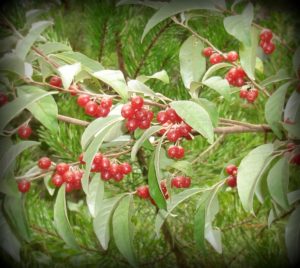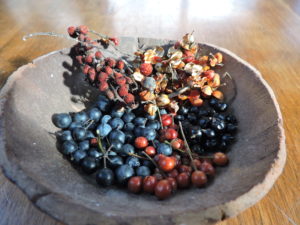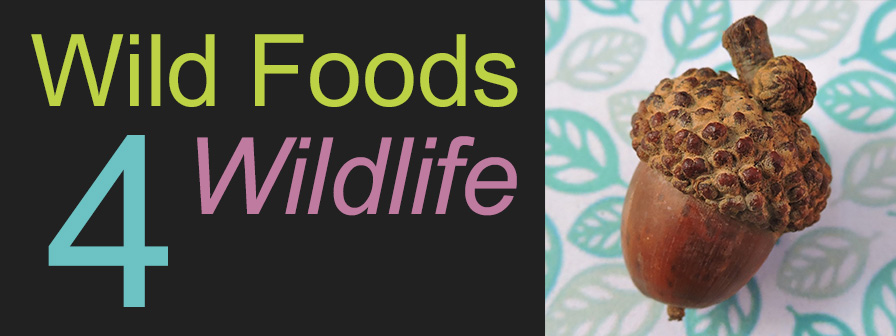
The topic of whether or not to collect non-native plant seeds can be a sensitive topic. There are ethical implications, so it is important for each forager to think through the potential consequences (and develop a mitigation plan for those consequences) when collecting non-native seeds and fruits. It is up to each forager to determine for him or herself whether the benefit of utilizing non-native plants is worth the effort it will take to contain the risks. To be an ethical forager, one must minimize non-native plant proliferation.
Remember, harvesting and transporting blooms, seeds and fruits of non-natives is the riskiest practice because flowers sometimes continue to mature and ripen after cut and you lose control over what happens to the seed after you deliver the food to the rehabber. How will the animal waste be handled? The safest way to use non-native plants as food is to only use the greens, buds and non-flowering parts of the plant.
There is an increasing awareness of the value of planting native plants and reducing non-native and invasive species in all our ecosystems. Our native flora and fauna have co-evolved to fit each other hand and glove, so the most nutritional plant foods for our wildlife animals are likely native plants. There can be no question that whenever possible, collecting native plant foods is ideal for rehab patients. If you have a choice between an abundant native species and a non-native species of the same genus, choose the native plant.
That being said, we also know that in the course of a day, our wildlife live with and utilize many non-native plants across many ecosystems, because non-native plants are ubiquitous now in most of our habitats. While not preferable to natives, non-native wild plants still more closely resemble the natural diet of wildlife than do the cultivated grocery store foods that rehabbers typically must offer. Non-native plants are often what one can find in quantity in day-to-day accessible areas like our backyards.
For that reason, both native and non-native plant foods are included at this website.
When a plant from another part of the world comes to an area, it either dies or survives in its new conditions. If it survives, the plant often finds that none of its usual predators or competitors are here, so it “grows like a weed” literally and figuratively. Often these weedy plants are plants that can tolerate a wide range of moisture, light and temperature conditions, so they tend to thrive in many different conditions and places. The plants that become non-native invasive plants are the ones whose reproduction strategy is one of high dispersal of its seeds, rapid reproduction and fast growth.
These non-native plants adapt well to growing close to where humans live—meaning they do well in soils that have been disturbed by development—places like roadsides, empty lots, clear cut land, disturbed pastures, and gardens. So these plants end up being the plants that volunteer foragers find easily.
Foragers should be mindful and proactive to avoid accidentally introducing a non-native invasive plant’s seeds, nuts or fruits into an area where it may not already exist. This could occur in situations where the rehabilitation facility is in proximity to national forests, national or state parks, conservation or other wilderness areas on the fringes of human settlement lands.
Wind-dispersed seeds probably create the highest risk for accidentally introducing a non-native plant into a more pristine native ecosystem. Fruits, nuts and browse from non-native plants are likely to be eaten and defecated within the rehabilitator’s enclosure where they can be cleaned up appropriately. However, that depends on the rehabber disposing of animal waste of cage cleanout appropriately and mindfully.
The Virginia Native Plant Society is a good resource for learning about the destructive influence of non-native plants. Non-native plants are bad for ecosystems and their residents because:
- Checks and balances operate within native plant ecosystems so that no one plant can dominate and become a monopoly in the system. This helps preserve diversity, so that there are lots of animal mom and pop restaurants in town and not just twenty animal fast food establishments.
- Pest-resistance, prolific berries, and tolerance of harsh conditions—all things homeowners love—also means that these non-native plants are SO GOOD at reproducing and surviving that they easily spread to the wild.
- Nesting sites in non-natives can be more prone to predation due to different branching patterns or lack of thorns that allows predators access to nests, as occurs with multiflora rose.
- It can take a long time to fully appreciate a non-native’s invasive potential: Autumn olive, bicolor lespedeza and multiflora rose were all intentionally introduced in order to be beneficial for wildlife. Good intention, the result sure is a mixed bag, at best.

A mix of natives and non-natives, harvested in the middle of winter: sumac, honeysuckle, greenbrier, bittersweet, rose, and crabapple.
